Typhoon Yagi latest: Strongest storm to hit Asia this year kills 14 in Vietnam and injures hundreds
Authorities warn of ongoing risks, including flooding and landslides, as the storm continues to weaken
Your support helps us to tell the story
From reproductive rights to climate change to Big Tech, The Independent is on the ground when the story is developing. Whether it's investigating the financials of Elon Musk's pro-Trump PAC or producing our latest documentary, 'The A Word', which shines a light on the American women fighting for reproductive rights, we know how important it is to parse out the facts from the messaging.
At such a critical moment in US history, we need reporters on the ground. Your donation allows us to keep sending journalists to speak to both sides of the story.
The Independent is trusted by Americans across the entire political spectrum. And unlike many other quality news outlets, we choose not to lock Americans out of our reporting and analysis with paywalls. We believe quality journalism should be available to everyone, paid for by those who can afford it.
Your support makes all the difference.Typhoon Yagi, the strongest storm to hit Asia this year, was downgraded to a tropical depression on Sunday after killing at least 14 in Vietnam.
The storm caused significant damage in northern Vietnam, China’s Hainan, and the Philippines, killing dozens and injuring several more.
Although the Vietnamese meteorological agency issued the downgrade, they warned of continuing risks, including potential flooding and landslides, as the storm progresses westward.
Strong winds reaching 203 kmph caused extensive damage across northern Vietnam. Buildings were wrecked, vehicles were crushed by debris, and falling trees triggered power outages, including in the capital, Hanoi.
More than 170 people are reported injured.
The government reported that the storm has resulted in at least three deaths in Hanoi, a city of 8.5 million, though these numbers are preliminary. Overall, reports indicate that fourteen people have died in Vietnam so far, including four from a landslide in Hoa Binh province, approximately 100 km south of Hanoi.
In the Philippines, the storm left 20 dead, several more missing, and over two million affected, with landslides and widespread flooding displacing over 47,600 people from their homes.
How many people have died?
Typhoon Yagi has now killed at least 23 people and injured dozens after making its way through the Philippines, China, Hong Kong and Vietnam.
Yagi was still a storm when it blew out of the northwestern Philippines into the South China Sea on Wednesday, leaving at least 16 people dead and 17 others missing mostly in landslides and widespread flooding and affecting more than two million people.
Yagi struck the Chinese city of Wenchang in Hainan province on Friday afternoon with wind speeds of up to about 152mph near its centre. Local authorities said on Saturday the typhoon left three people dead and injured at least 92 others.
Some 420,000 Hainan residents were relocated before the typhoon’s landfall. Another half a million people in Guangdong province were evacuated before Yagi made a second landfall in the province’s Xuwen County on Friday night.
It made landfall in Vietnam on Saturday afternoon, and has now killed at least 4 people.
In pictures: Typhoon Yagi makes landfall in Vietnam
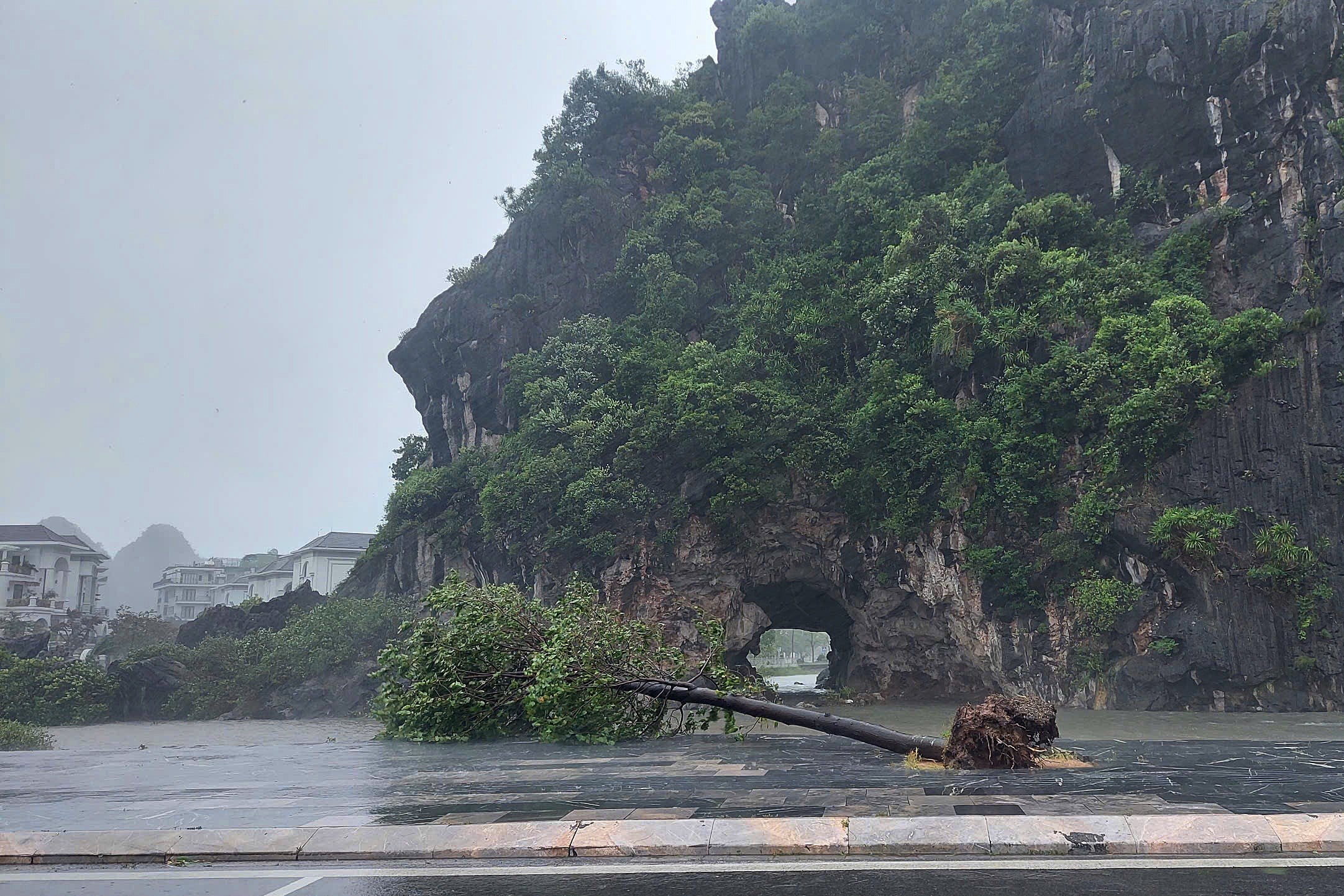
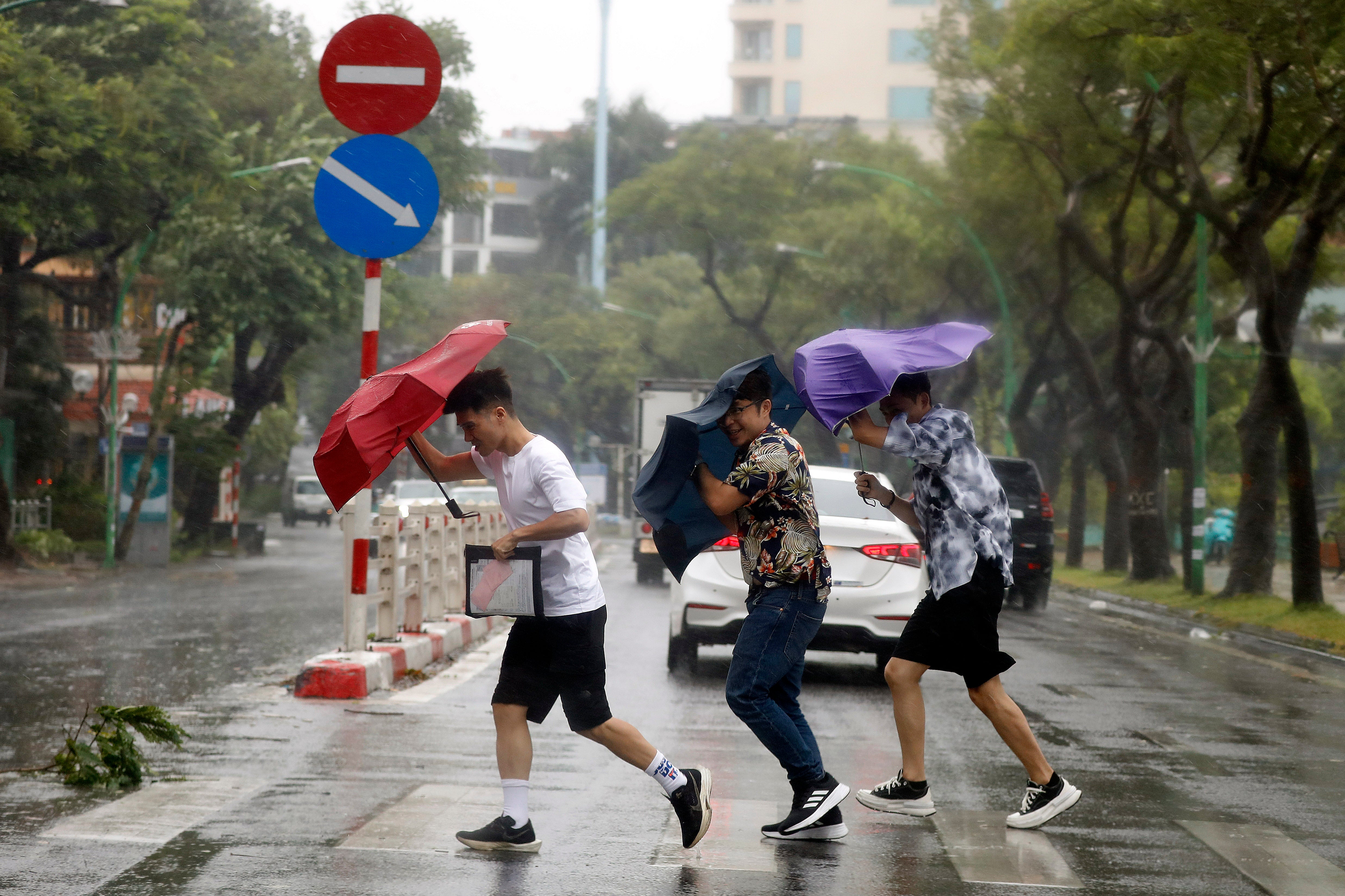
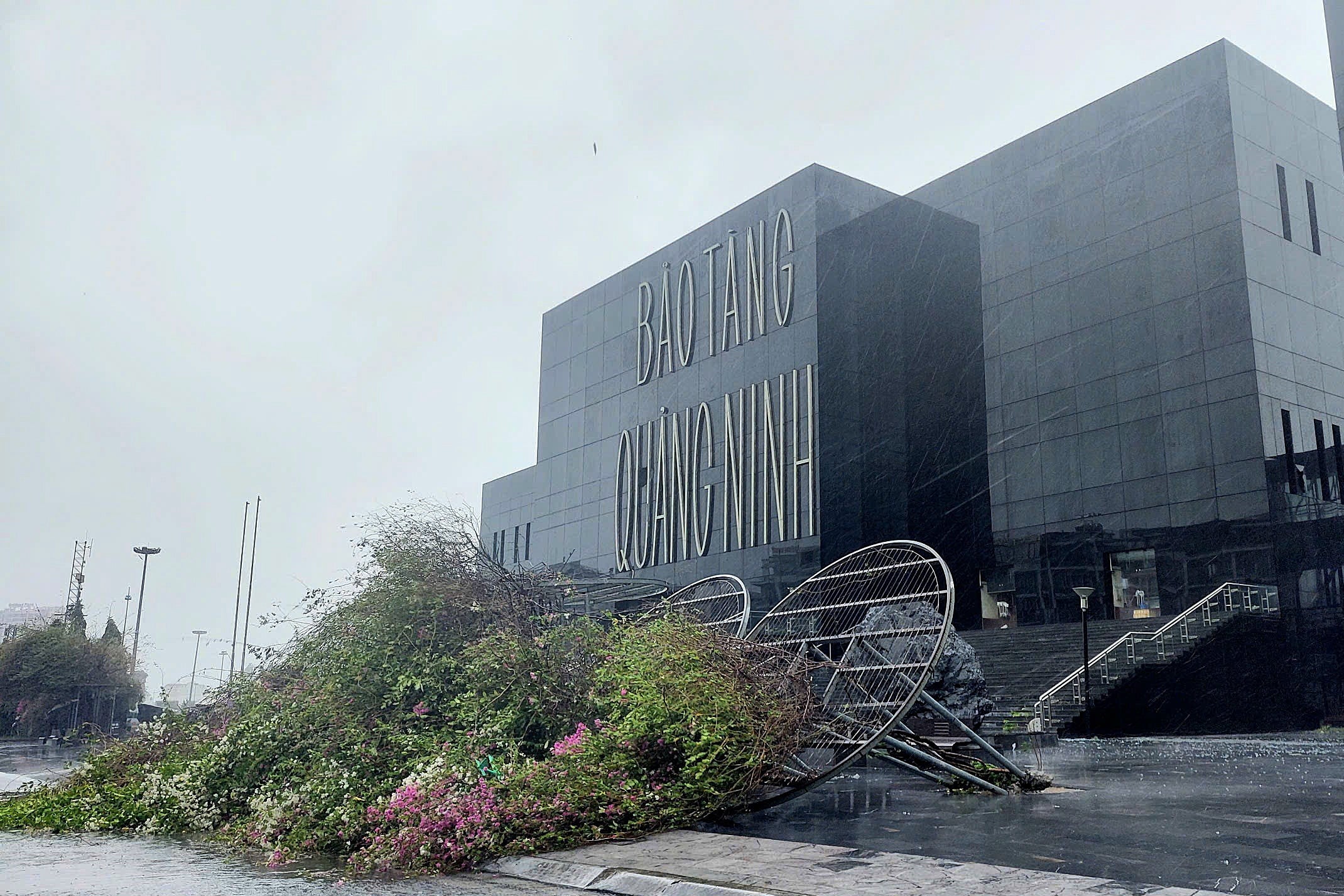
Southern China reels from Typhoon Yagi’s fury, one million affected
Typhoon Yagi made two landfalls in southern China on Friday, forcing the relocation of nearly one million people as it brought widespread destruction and disruption to the region.
The storm, which packed winds of up to 245kmph, made its first landfall in Hainan province’s Wenchang city at around 4.20pm, and a second landfall in Xuwen County in neighbouring Guangdong province on Friday night.
Ahead of the landfalls, authorities evacuated nearly 420,000 residents in Hainan and over 500,000 in Guangdong, with many more forced to flee their homes due to heavy rain, power outages, and strong winds. The storm caused widespread disruptions, including:- Suspended classes, work, transportation, and businesses in parts of the province as early as Wednesday evening
- Closed tourist attractions and grounded flights at three airports on the island
- Power outages, leaving and heavy rain across most of Hainan
- Strong winds buffeting the province’s iconic coconut trees
The residents were building sandbag barriers outside buildings to guard against possible floods and reinforcing their windows with tape.
Authorities issued top emergency response alerts, with state broadcaster CCTV reporting that Qinzhou city in Guangxi region also issued a top emergency response alert to guard against the typhoon. The storm was described as the strongest autumn typhoon to have landed in China by the country’s national meteorological authorities.
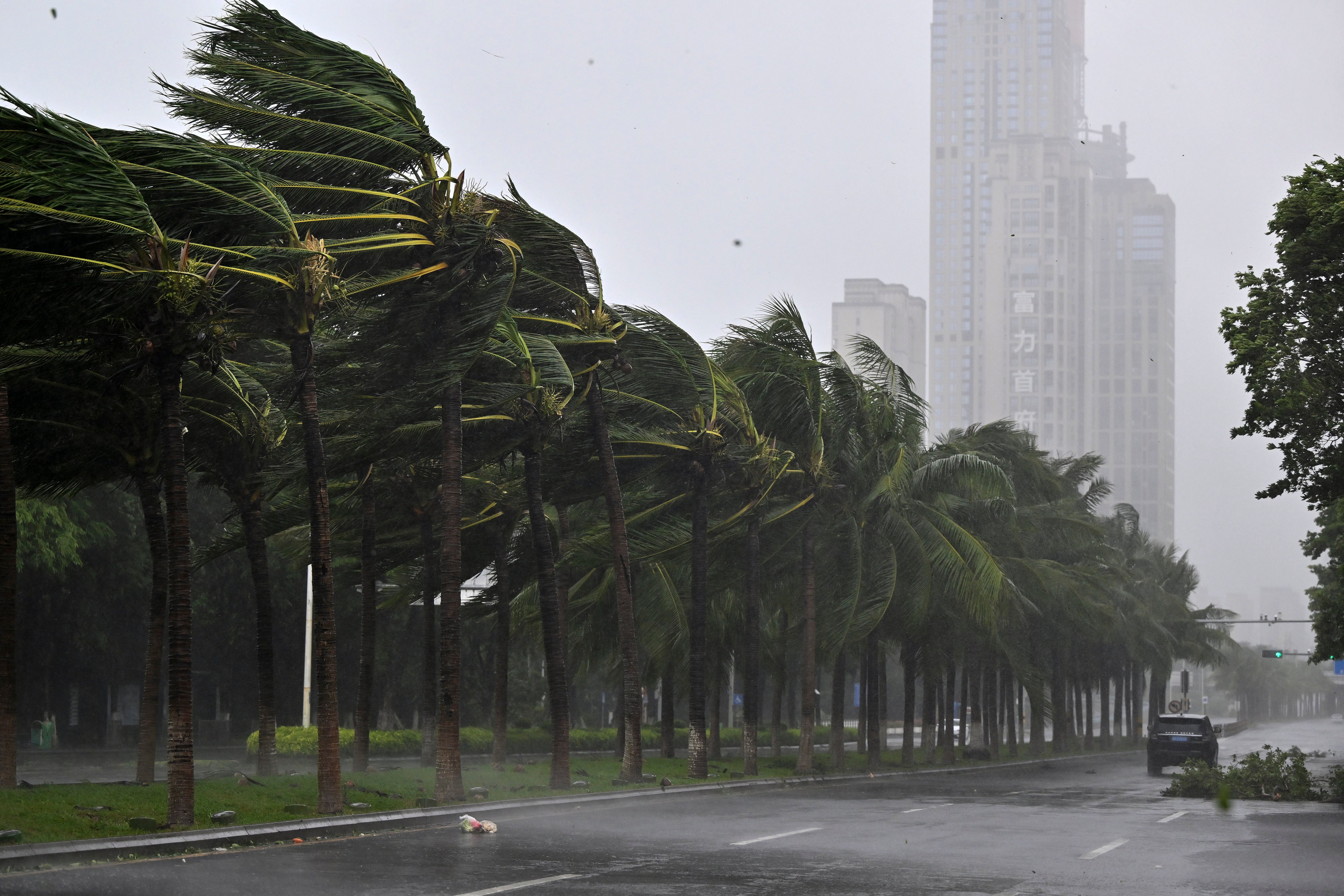
Vietnam orders evacuations and closes airports
Vietnam evacuated more than 50,000 people from coastal towns and deployed 450,000 military personnel, the government said.
It also suspended operations for several hours at four airports on Saturday, including Hanoi’s Noi Bai, the busiest in the north, which cancelled more than 300 flights.
High schools were also closed in 12 northern provinces, including in the capital Hanoi, which has a population of 8.5 million.
Authorities in the capital suspended public transport on buses and its two elevated metro lines on Saturday afternoon, state media reported. The meteorological agency has warned of risks of heavy flooding in the city centre.
Hanoi resident Nguyen Manh Quan, 40, said: “The wind is strong enough to blow a person over,” while Dang Van Phuong, also 40, said: “I’ve never seen a storm like this, you can’t drive in these winds.”
Where is the typhoon?
The typhoon landed at Vietnam’s coastal provinces of Quang Ninh and Haiphong with wind speeds of up to 149 kilometers per hour, state media reported. Before landing, strong winds felled a tree, killing a woman in the capital, Hanoi, local media said Saturday.
Quang Ninh is home to the UNESCO World Heritage site Ha Long Bay, known for its many towering limestone islands. Hundreds of cruises were canceled at the popular site before the typhoon landed, according to local media.
Haiphong is an industrial hub, home to large factories, including EV maker VinFast and Apple supplier Pegatron.The typhoon has also triggered power outages in large parts of Quang Ninh and Thai Binh provinces.

Why are storms getting stronger?
Benjamin Horton, director of the Earth Observatory of Singapore said that storms like typhoon Yagi were “getting stronger due to climate change, primarily because warmer ocean waters provide more energy to fuel the storms, leading to increased wind speeds and heavier rainfall.”
Climate change was also causing storms to potentially move to different locations with studies by the observatory showing that the latitude where storms peaked in their intensity was shifting, exposing newer areas to the impacts of storms, he added.
Horton said that protecting natural systems ranging from reefs to rivers while building structures that were more resilient to strong winds and flying debris and improving existing infrastructure were all measures that could help countries better deal with strong typhoons.
In Pictures: Typhoon Yagi lashes northern Vietnam
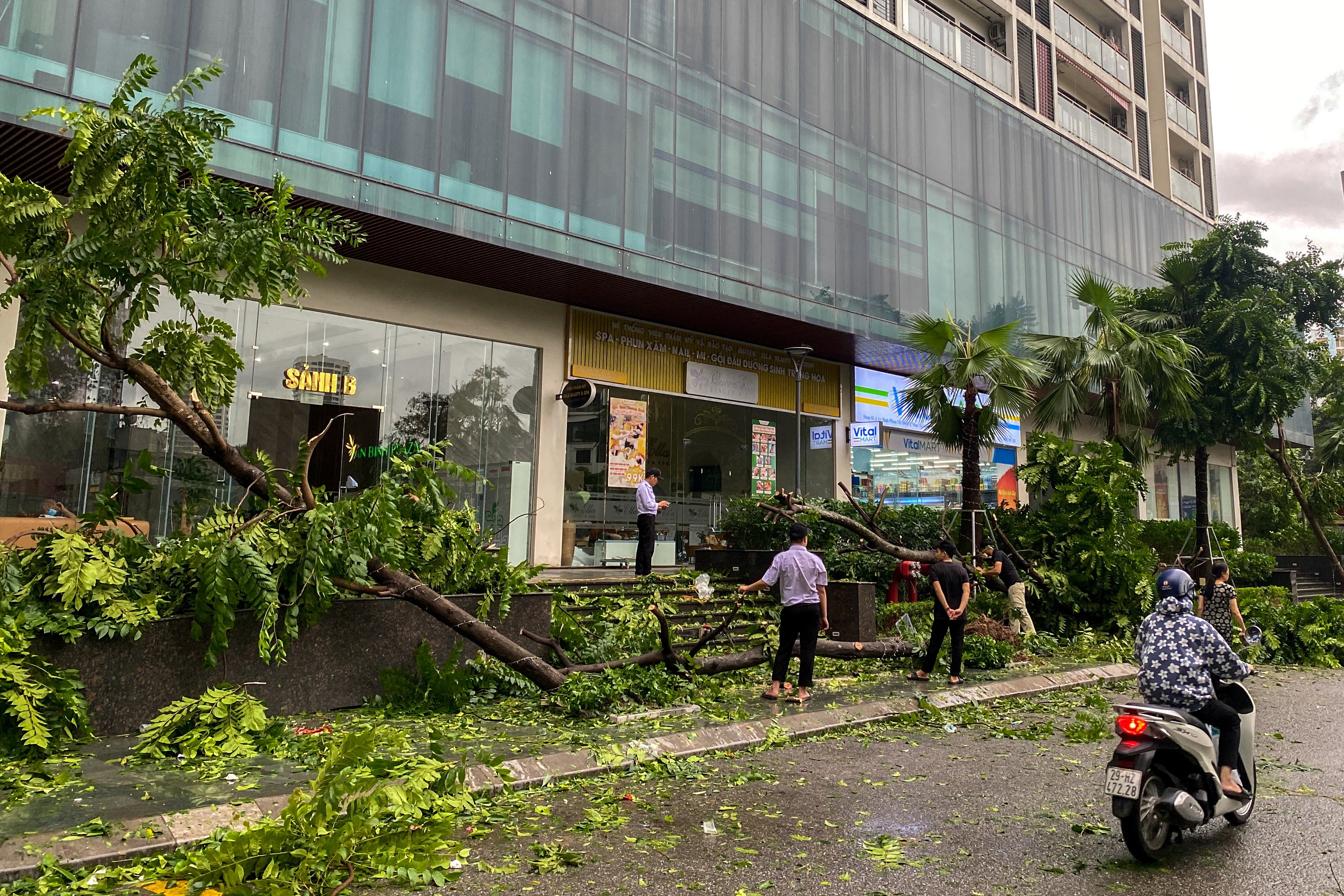
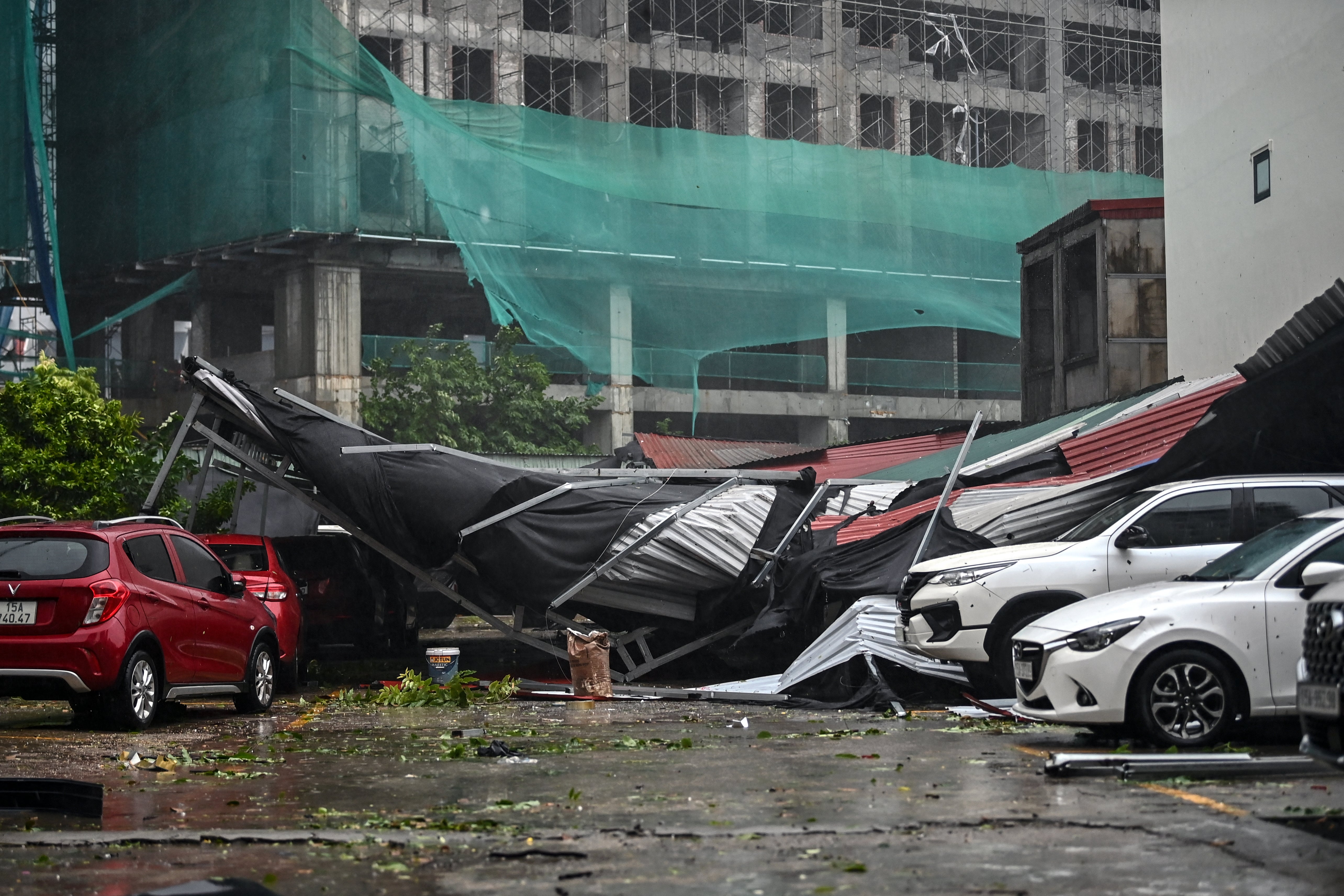
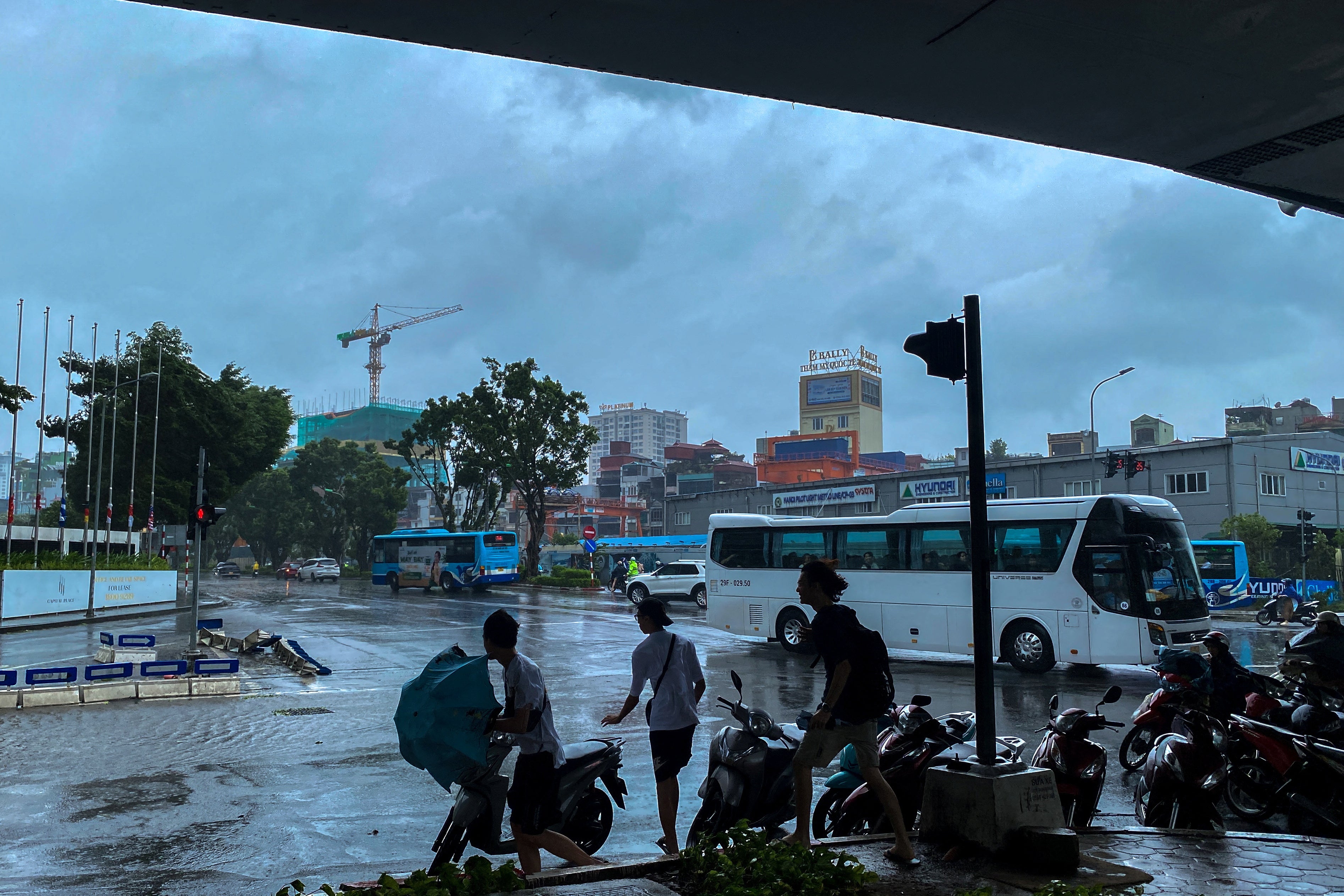
What is the difference between a typhoon and hurricane?
Here are a few commonly used weather terms and their definitions, which rely on material from the National Weather Service:
Hurricane or typhoon — A warm-core tropical cyclone in which the minimum sustained surface wind is 74 mph (119 kph) or more. Hurricanes are spawned east of the international date line. Typhoons develop west of the line. They are known as cyclones in the Indian Ocean and Australia.
Super typhoon — A typhoon in which the maximum sustained surface wind is 150 mph (241 kph) or more.
Tornado — A violent rotating column of air forming a pendant, usually from a cumulonimbus cloud, and touching the ground. On a local scale, it is the most destructive of all atmospheric phenomena. Tornadoes can appear from any direction, but in the U.S. most move from southwest to northeast. Measured on F-scale from EF0 to EF5, which considers 28 different types of damage to structures and trees. An EF2 or higher is considered a significant tornado.
Watch: Vietnam orders evacuations and closes airports as Typhoon Yagi approaches
Typhoon Yagi weakens after hitting Vietnam's capital Hanoi
Typhoon Yagi weakened on Sunday after lashing Vietnam’s northern coastal region, flooding many neighbourhoods in Hanoi, downing thousands of trees and damaging houses, the government said.
Typhoon Yagi, one of Asia’s strongest storms this year hit northern Vietnam, killing at least four people after causing devastation in China and the Philippines.
Yagi made landfall in northern Vietnam yesterday afternoon with winds reaching 149 kmph. More than 70 people are reported injured.
Join our commenting forum
Join thought-provoking conversations, follow other Independent readers and see their replies
Comments